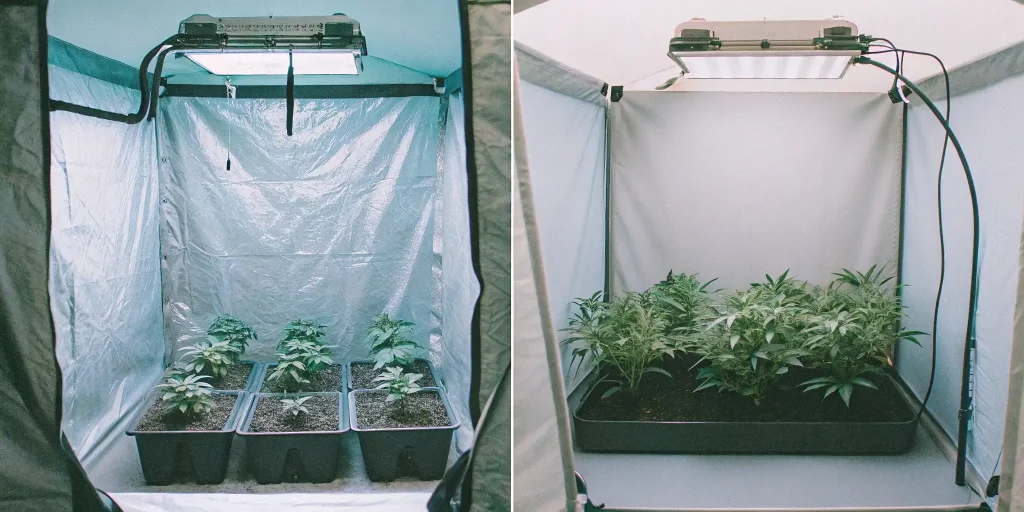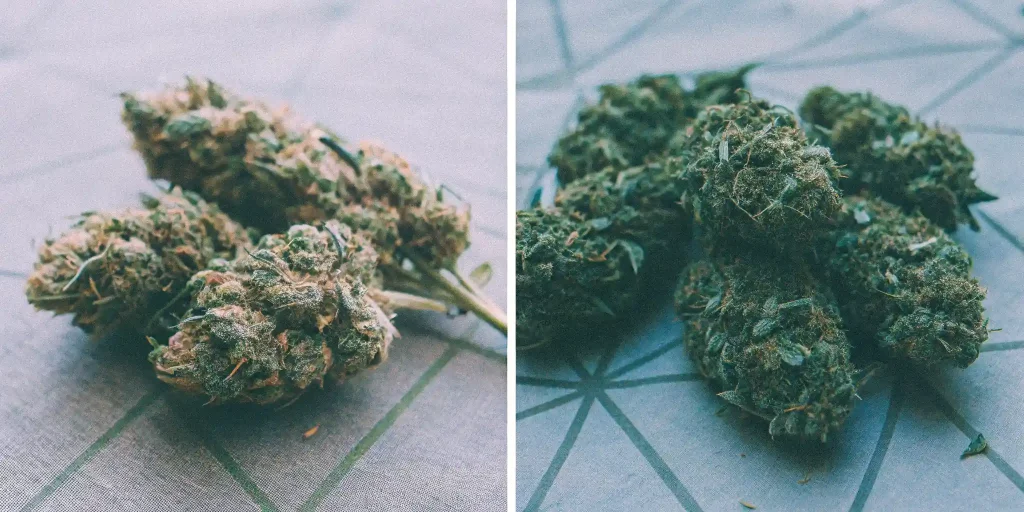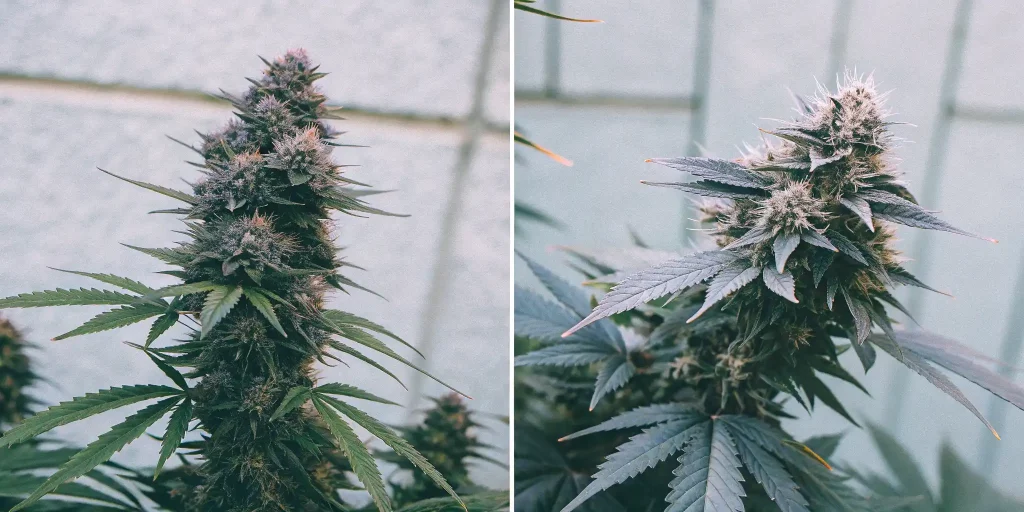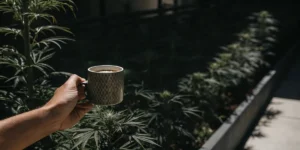Differences Between Autoflower vs Photoperiod Cannabis
What Are Autoflowering Cannabis Seeds?
Autoflower vs Photoperiod Cannabis: Autoflowering cannabis seeds produce plants that automatically transition from the vegetative stage to the flowering stage based on their age, rather than relying on changes in light exposure. This characteristic originates from the Cannabis ruderalis species, which evolved in regions with short summers and extreme weather conditions. As a result, autoflowers tend to have a rapid life cycle, typically completing their growth from seed to harvest in 8 to 12 weeks.
These plants are generally compact and resilient, making them ideal for small grow spaces or outdoor cultivation where discretion is required. Check out our guide on the best autoflowers for a 3×3 grow
Their ability to withstand environmental stress and their low maintenance requirements make them a great choice for beginners. Since autoflowers don’t depend on light cycles, growers don’t need to manually switch between vegetative and flowering periods, simplifying the process.
What Are Photoperiod Cannabis Seeds?
Photoperiod cannabis seeds, in contrast, rely on changes in the light cycle to transition into the flowering stage. In natural outdoor environments, these plants begin to flower as the days shorten, typically in late summer. Indoor growers need to manually adjust the light schedule, providing 18-24 hours of light during the vegetative phase and switching to 12 hours of light and 12 hours of darkness to induce flowering.
Photoperiod strains offer greater control over plant development. Since they remain in the vegetative stage as long as they receive sufficient light, growers can extend the growth period, allowing plants to become larger and more productive. This flexibility enables advanced cultivation techniques, such as cloning, topping, and ScrOG (Screen of Green), which can significantly boost yields.
Key Genetic Differences Between Autoflower vs Photoperiod Strains
The primary genetic difference between these two types lies in their flowering triggers. Autoflowers contain ruderalis genetics, which cause them to flower automatically within a few weeks of germination, regardless of light exposure. This characteristic makes them ideal for growers looking for a quick turnaround without worrying about light management.
Photoperiod plants, on the other hand, are descended from sativa and indica strains, meaning their flowering stage is entirely dependent on light cycles. This allows greater control over plant structure, yield, and potency, but also requires more attention to environmental conditions.
Growth Cycle Comparison: Autoflower vs Photoperiod
How Long Do Autoflowers Take to Grow?
One of the biggest advantages of autoflowering cannabis is its quick turnaround. Most autoflowering strains complete their entire life cycle within 8–12 weeks, making them perfect for growers who want multiple harvests in a single season. This speed is particularly useful in colder climates, where growing time is limited.
However, because their growth is time-dependent, autoflowers have little room for error. Any stress caused by overwatering, underfeeding, or improper training can negatively impact yields since the plant has a fixed lifespan. Providing optimal conditions from the start is essential for maximizing production.
Growth Timeline of Photoperiod Cannabis Plants
Photoperiod plants have a longer growth cycle, but they offer more flexibility. The vegetative stage alone can last from a few weeks to several months, depending on the grower’s goals. Some cultivators extend this phase to create larger, more productive plants before inducing flowering by changing the light schedule. Once switched to 12/12 lighting, photoperiod plants take another 6 to 12 weeks to fully flower, depending on the strain. This extended timeline allows for better development of cannabinoid and terpene profiles, often resulting in higher potency and richer aromas.
Which Option Offers Faster Harvests?
For growers seeking speed and efficiency, autoflowers are the best option. Their automatic flowering ability ensures a quick harvest, making them ideal for short growing seasons or indoor setups where space and time are limited. Additionally, continuous cycles of autoflowers can provide a steady supply of buds year-round.
Photoperiod strains, however, offer the potential for higher yields per plant. Although they take longer to grow, the ability to manipulate their vegetative phase means they can produce significantly larger harvests in a single cycle.
Yield and Potency: Which One is More Productive?
Do Autoflowers Produce Smaller Yields Than Photoperiod Plants?
Yes, in general, autoflowering plants yield less per plant than photoperiod strains. Their compact size and rapid growth cycle limit the amount of bud they can produce. While modern autoflowers have improved in yield, they still do not match the production levels of well-managed photoperiod plants. However, because autoflowers can be harvested more frequently, growers can achieve comparable total yields over time by running continuous grows.
Are Photoperiod Strains More Potent Than Autoflowers?
Historically, photoperiod strains have been considered more potent than autoflowers. Their longer vegetative phase allows for stronger cannabinoid and terpene production, leading to higher THC and CBD levels. This made them the preferred choice for both recreational and medical users. However, recent advancements in autoflower breeding have significantly closed the gap. Many modern autoflowering strains now rival photoperiod varieties in terms of potency and overall quality.
How Training Techniques Affect Yield in Both Types
Photoperiod plants respond well to high-stress training (HST) methods like topping, super cropping, and mainlining, which enhance bud production. These techniques require a longer vegetative period, something autoflowers cannot afford due to their time-sensitive lifecycle.
Autoflowers perform best with low-stress training (LST) techniques, such as bending branches to expose more bud sites to light. Since autoflowers don’t have recovery time, growers must avoid excessive stress to prevent stunted growth.

Growing Conditions and Care Requirements
Light Schedules for Autoflowers vs Photoperiod Strains
Autoflowers thrive under 18–24 hours of light per day throughout their entire life cycle. They do not require a specific light schedule to trigger flowering, making them easy to manage.
Photoperiod plants, however, need at least 18 hours of light to stay in the vegetative phase and must be switched to 12/12 lighting to begin flowering. This requires careful light management and lightproof grow spaces to prevent disruptions.
Nutrient Requirements for Each Type
Autoflowers generally require lighter nutrient feeding, as they have a shorter lifespan and grow smaller. Overfeeding can easily damage them, leading to nutrient burn.
Photoperiod plants consume more nutrients, particularly nitrogen during vegetative growth and phosphorus/potassium during flowering. Their longer lifespan allows for a gradual feeding approach.
Common Mistakes When Growing Autoflowers and Photoperiod Strains
For autoflowers: Overfeeding, overwatering, and high-stress training can negatively impact growth. For photoperiod plants: Inconsistent light schedules, improper training, and incorrect nutrient adjustments can lead to stunted growth or hermaphroditism.
Autoflower vs Photoperiod: Which One Should You Choose?
Factors to Consider When Selecting Seeds
- For beginners: Autoflowers offer simplicity and quick results.
- For maximum yield: Photoperiod plants provide higher harvests per plant.
- For year-round growing: Autoflowers allow continuous harvests.
- For potency seekers: Photoperiod strains generally offer higher cannabinoid levels.
By understanding these key differences, growers can select the right seeds based on their experience level, time constraints, and cultivation goals.
Autoflower vs Photoperiod: Additional Considerations
Environmental Factors and Adaptability
Autoflowers are highly adaptable to various climates, making them a suitable choice for growers in both controlled indoor environments and unpredictable outdoor conditions. Their ability to flower regardless of daylight hours allows cultivators to plant them at any time of the year, provided the temperatures remain within a favorable range.
Photoperiod strains, on the other hand, require more precise environmental management. They need light deprivation techniques if grown outdoors outside their natural growing season. Indoors, they thrive best under strict lighting schedules, requiring artificial light adjustments to transition into the flowering phase.
Cost and Availability Differences
When choosing between autoflower and photoperiod seeds, growers must consider cost-effectiveness. Autoflowers generally cost slightly more per seed due to their specialized genetics, but their shorter lifecycle allows for quicker harvests and increased turnover. This efficiency makes them cost-effective in the long run for those seeking frequent harvests.
Photoperiod strains, while potentially yielding more per plant, demand more time, resources, and electricity costs due to extended growth periods. However, their ability to be cloned and maintained over multiple cycles may reduce overall seed expenses for long-term growers.
Best Uses for Autoflower vs Photoperiod Strains
The best strain type depends on the grower’s goals:
- For quick harvests and multiple yearly cycles: Autoflowers are the best option.
- For maximum yield and potency: Photoperiod strains offer higher production potential.
- For medical users needing regular supplies: Autoflowers provide consistent, fast-growing options.
- For breeders and experimental growers: Photoperiod plants allow cloning and genetic manipulation for customized strains.

FAQs About Autoflower vs Photoperiod Cannabis
Can autoflowers be cloned like photoperiod plants?
No, autoflowers cannot be cloned effectively because their lifecycle is predetermined. Unlike photoperiod plants, which remain in the vegetative stage until light cycles change, autoflowers will continue to grow on their fixed timeline, meaning clones will start flowering at the same age as the mother plant, often resulting in tiny, underdeveloped clones.
Which type is better for beginner growers?
Autoflowers are generally the best choice for beginners due to their simple light requirements, shorter growth cycle, and resilience against environmental stress. They are easier to manage and provide quick results, reducing the risk of common mistakes affecting overall yield.
Do photoperiod plants produce better-quality buds than autoflowers?
While photoperiod plants have traditionally been favored for producing higher-quality buds due to their extended vegetative phase and increased resin production, modern autoflower genetics have significantly improved. Many autoflower strains now rival photoperiod varieties in potency, aroma, and cannabinoid content, making them a viable option for high-quality harvests.




